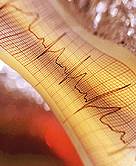 March 19, 2008
March 19, 2008
Artery Plaque Boosts Hispanics' Odds for Stroke
WEDNESDAY, March 19 (HealthDay News) -- Hispanic Americans with even a small amount of plaque build-up in their carotid artery -- the vessel that supplies blood to the brain -- are up to four times more likely to suffer or die from a stroke compared to those with clear arteries, a new study finds.
"These results are important for developing stroke and vascular prevention programs for all, but also for certain ethnic groups such as Hispanics, who represent the fastest growing minority population in the U.S.," study author Dr. Tatjana Rundek, of the Miller School of Medicine at the University of Miami in Florida, said in a prepared statement.
The research included almost 2,200 men and women who took part in the multi-ethnic Northern Manhattan Study, in New York City.
Using ultrasound, the researchers found that 58 percent of the participants had carotid artery plaque, and that 25 percent of them had maximum carotid plaque thickness (more than 1.9 millimeters of plaque).
After an average follow-up of seven years, 121 of the study participants had suffered or died from ischemic stroke (blockage of blood flow to the brain), 118 had suffered or died from heart attack, and 166 had died of other vascular causes.
The researchers found that Hispanics with the thickest amounts of carotid artery plaque were three to four times more likely to suffer a stroke, heart attack, or some other type of vascular event than Hispanics with no carotid artery plaque.
The study appears in the March 19 issue of the journal Neurology.
"More research is needed though to determine why Hispanics with even small amounts of carotid plaque are particularly susceptible to vascular events," Rundek said.
This study also showed that ultrasound measurement of carotid plaque offers doctors a simple method of determining a patient's stroke risk and guiding stroke-prevention therapies.
"It is a non-invasive marker that can help doctors identify the beginning stages of atherosclerosis, or hardening of the arteries, that is also associated with increased risk of stroke," Rundek said.
More information
The U.S. National Heart, Lung, and Blood Institute has more about atherosclerosis.
-- Robert Preidt
SOURCES: American Academy of Neurology, news release, March 19, 2008
id=613650


